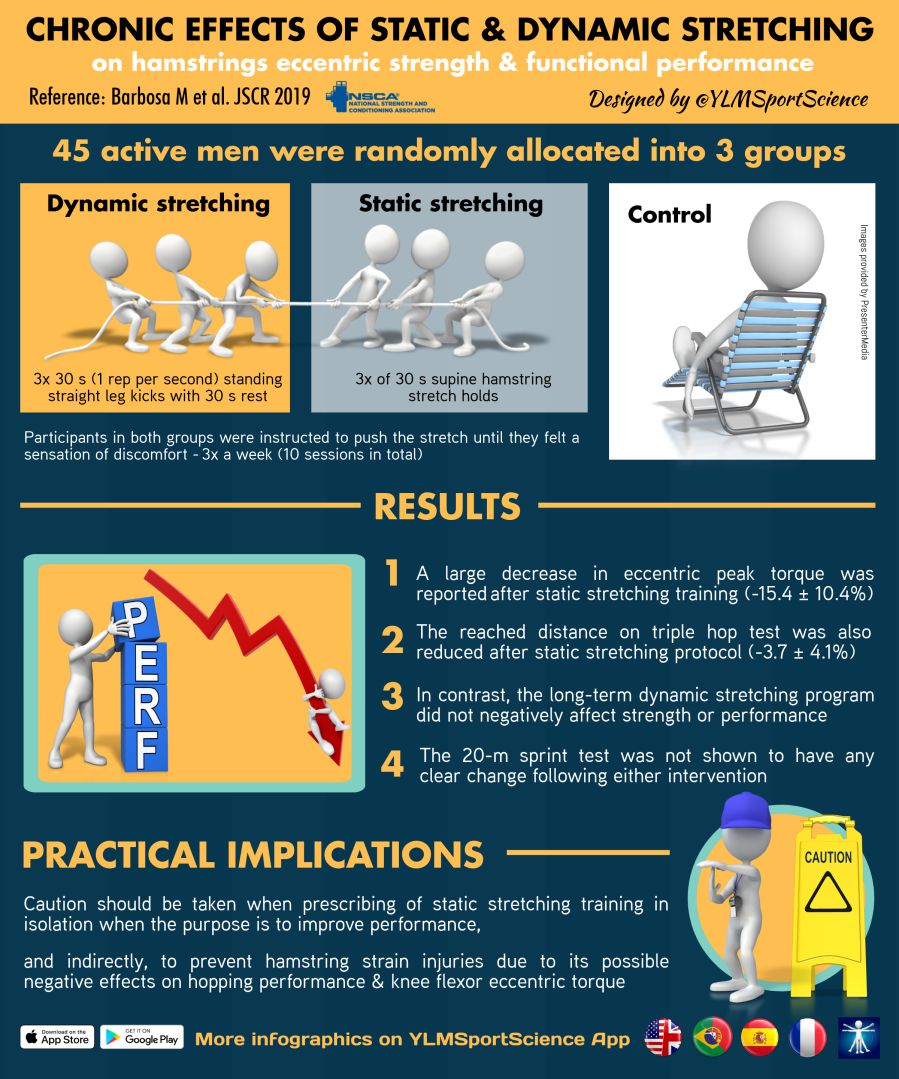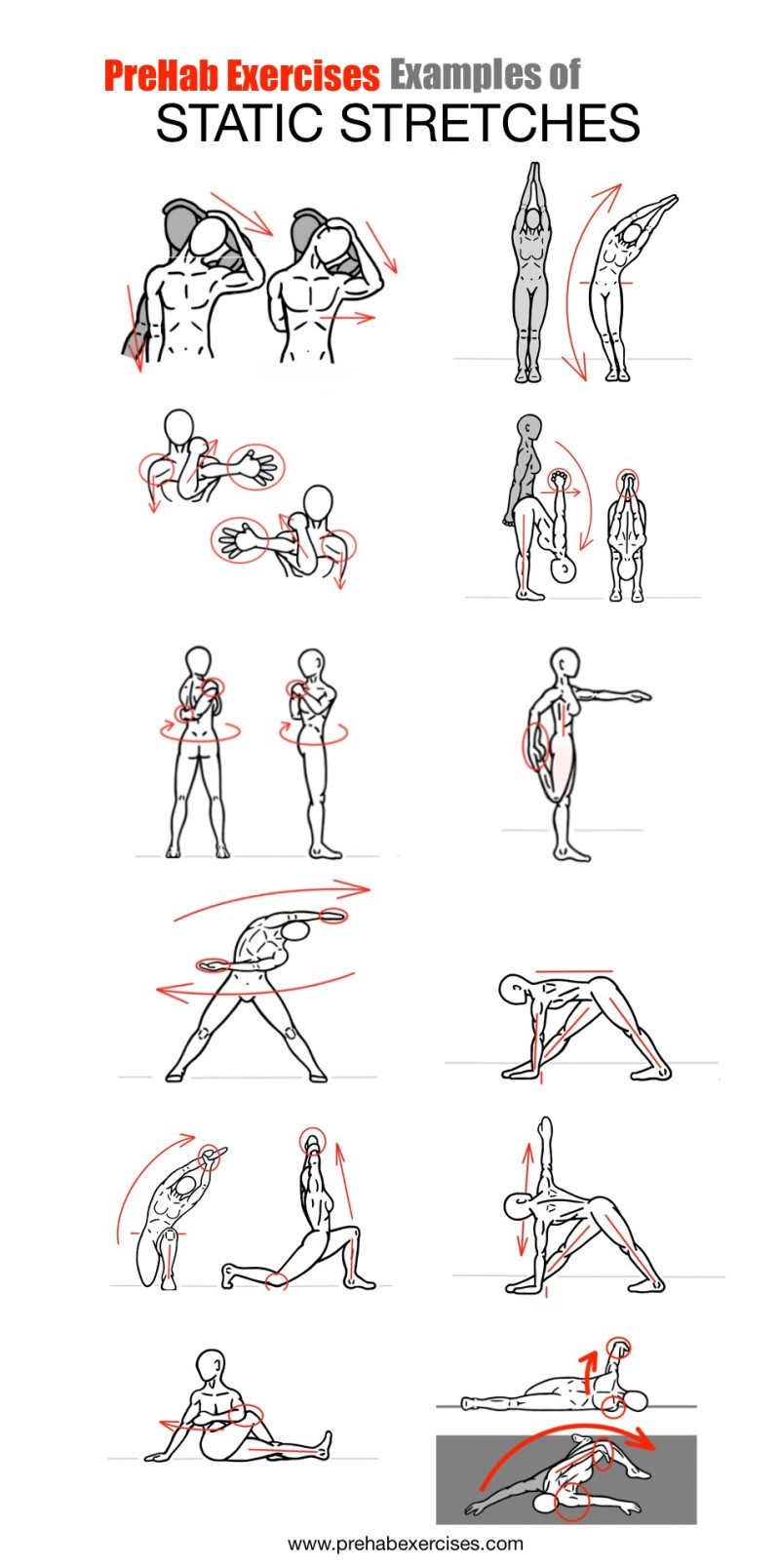Limbering Up: The Right Stretch for the Right Time in Your Workout
An insightful guide into the world of stretching, examining the difference between dynamic and static stretches and their appropriate timing around exercise routines. Whether it's prepping for an intense workout or winding down after a sweat session, learn how to optimize your stretches for maximum performance and recovery.
WN
By Workout Notepad
May 22, 2024
Introduction to Stretching: A Tale of Two Techniques
In the grand theater of physical fitness, stretching takes center stage with two venerable performers: Dynamic Stretch, the agile mover fluidly matching the tempo of a workout’s opening act, and Static Stretch, the unwavering sentinel who brings closure and recovery to the fitness ensemble. Like a tale spun from well-being’s lore, these two techniques play crucial roles, one preparing the body for the energetic dance of exercise, the other easing the muscles into a tranquil denouement. Stretching goes beyond a simple prelude or epilogue to exertion; it is an intrinsic part of maintaining flexibility, increasing range of motion, and reducing the risk of the body’s most feared antagonist— injury. Like reading a script before a play, partaking in consistent stretching, preferably two to three times a week according to Mayo Clinic, sets the stage for a stellar performance each time muscles come into action. Pre-contraction stretching such as PNF, although a lesser-known cast member, has also garnered acclaim for its effectiveness in augmenting range of motion.
Casting a further spotlight on the protagonists of our stretching tale, both dynamic and static stretching bring unique benefits to the fitness odyssey. Dynamic stretching, hailed for its active approach, warms up the muscles akin to a dress rehearsal, simulating the movements that will soon follow in the main performance. This method finds particular favor in preparing athletes and exercise enthusiasts alike, helping mitigate a decrease in strength and performance during their exertions. In stark contrast, static stretching, the calming dénouement, serves as the eponymous cool-down, guiding muscles back to solace post-exercise. It holds a place of honor in the regimes of older adults for whom flexibility remains an ever important co-star. Whether recovering from strenuous performance or adapting the backstage rigging for better range, stretching envelopes the workout narrative, ensuring the safety and longevity of its players.
Dynamic Stretch: The Workout Warm-Up Hero
Just as a knight readies their armor for battle, dynamic stretching prepares the body for the vigorous crusade of exercise. Unlike static stretching, where muscles are elongated and held, dynamic stretching is characterized by its fluid, controlled motion, making it an indispensable hero in the realm of workout warm-ups. It involves deliberately moving parts of the body and gradually increasing reach, speed of movement, or both. This approach heats up the body’s engine, lubricating joints, increasing blood flow, and thereby slashing the risk of injury. Engaging in dynamic stretches before any physical exertion primes the muscles in a way that aligns with their imminent activities. Take swimmers, runners, and weightlifters; dynamic stretches mimic the targeted movements of these disciplines, such as leg swings reflecting a runner’s stride, enhancing overall performance by actively engaging the muscles that will soon take center stage.
Transitioning through these purposeful movements is much like a rehearsal for the body, offering a sneak peek of the upcoming workout’s demands. It’s crucial to ensure that dynamic stretching isn’t just dutifully performed, but done so with a dash of ebullience and technique. As we brace ourselves to dive into the pool of dynamic movements, it’s important to recognize each stretch should be tailored to mirror the workout ahead. This ensures the ballistic fibers and joints involved are suitably turbocharged for action. The ensuing segment is paramount for fitness enthusiasts eager to embrace the full spectrum of dynamic stretching benefits: it will guide one through various exercises, specifying suitable form and recommended repetitions. Aligning with the spirit of tailored workouts, a list of dynamic stretches awaits, promising to outfit each individual’s fitness regimen with the perfect preparatory toolkit for the workout to follow, be it the depths of a pool or the expanse of a track.
The Dynamic Do’s: Best Practices Before Breaking a Sweat

dynamic stretching routine infographic
The dynamic stretches you choose should reflect the nature of the activity you’re about to undertake, serving as a specific primer for the muscles and joints involved. For a runner, this might include leg swings, which not only elevate the heart rate but also work the hamstrings, hip flexors, and adductors across a range of motion that simulate running. Begin with 10 to 15 swings per leg, ensuring a controlled movement rather than momentum-driven swings. Likewise, arm circles can be employed to engage the shoulders and upper body, especially beneficial before exercises involving these areas. Commence with ten forward circles and ten backward circles with each arm. Those preparing for weightlifting could benefit from lunges with a twist, as this compound movement readies the lower body for squats and deadlifts while integrating a rotational component that activates the core. Five lunges on each leg with a full twist to both sides should suffice. Regardless of the activity, keep in mind that dynamic stretches should be performed in sets of 8 to 12 repetitions, with attention always on correct form to avoid injuries. This practice enhances muscle performance and reduces the risk of strains or sprains during strenuous activities. The overarching goal is precision and smooth, fluid movement rather than speed and reflex. As for individuals who spend extensive periods sitting, incorporating desk-bound dynamic stretches like seated leg lifts or chair squats every hour can alleviate stiffness and improve circulation, negating some of the adverse effects of a sedentary lifestyle. Injuries and age are important considerations; thus, tailored modifications should be made for those over 65 or currently rehabilitating. Remember, dynamic stretching acts as a prologue to our physical endeavors, preparing the body for the exertions to come, making it a vital routine for athletes and casual exercisers alike. Transitioning next into a more quiescent mode of stretching, static stretching comes into play post-exercise, providing a nurturing wrap-up to the workout sequence. The calm continuity of static holds offers a stark contrast to the energetic commencement of dynamic stretches but is just as crucial in rounding out a balanced fitness regimen.
Static Stretch: The Post-Workout Comforter

static stretching examples
Static Stretch: The Post-Workout Comforter
Cooldown Chronicles: Unwinding with Static Stretching
Cooldown Chronicles: Unwinding with Static Stretching
Innovating the Stretch: How Tech Enhances Training
In modern exercise regimens, technology plays an integral role in enhancing the stretching routines of both casual fitness enthusiasts and seasoned athletes alike. The advent of elite workout applications, such as those which feature a comprehensive toolkit that includes cloud backups and workout tracking, significantly upgrades the stretching experience. The key advantage of these applications lies in their intelligent virtual assistants, which adeptly recommend dynamic stretches as a warm-up based on the workout planned for the day. These smart algorithms take into account the exercise categories and user preferences to craft a personalized stretch routine that optimizes performance and readiness for the impending physical exertion. Post-workout, the same applications pivot to suggest static stretches, targeting the muscles that were engaged during the workout, effectively aiding in recovery and reducing the risk of injury. This adaptive guidance ensures that no matter the venue—outdoors, at home, or while on the move—users have expert-designed stretch routines at their fingertips, enhancing efficiency and effectiveness of their workout rituals.
Beyond the immediate benefits of personalized stretch suggestions, workout applications that deliver in-depth analytics and cloud-based tracking present users with an unparalleled insight into their fitness journey. Utilizing such a platform enables a continuous feedback loop, where the application learns from the user’s actual workout performance and adjusts future routines for optimal benefit. The Workout Notepad app’s cloud backup feature ensures that, no matter the device or location, individuals have access to their historical data, enabling a consistent and progressive stretching regimen. As the next section will explore, real-life success stories demonstrate how incorporating these smart apps into stretch routines have not only improved flexibility but have proven essential to documenting progress, making informed adjustments, and ultimately achieving greater physical milestones.
Real-Life Flex: Stretching Success Stories
Real-Life Flex: Stretching Success Stories
Countless fitness enthusiasts and athletes have woven the threads of dynamic and static stretching into the tapestry of their training routines, and their success stories often share a common theme: the integration of technology. On platforms like Reddit’s r/Fitness, you’ll encounter many such triumphs, like the case of a part-time marathon runner and full-time software engineer. After integrating dynamic stretches into his morning ritual, he not only shaved minutes off his personal best but also banished the recurrent hamstring niggles that plagued his sprints. Through meticulous tracking using a fitness app, he mastered the balance between exertion and recovery, the app’s analytics illuminating the path to his breakthroughs.
Then there’s the story of a yoga instructor adapting to pregnancy, who managed to mitigate her tight neck and traps by incorporating specially guided static stretches post-class. Through her app’s workout snapshot features, she monitored subtle changes in her flexibility over the months, allowing her to fine-tune her regime and stay motivated throughout her prenatal journey. These narrations embody the spirit of modern stretching philosopy - fluid as a dynamic stretch, and restorative as its static counterpart. As we wrap up this journey through tales of resilience and adaptability, let’s not forget the synergy between meticulous planning and the natural harmony of our body’s capabilities – a balance well encapsulated by the Workout Notepad app’s approach to holistic fitness tracking.
Conclusion: Becoming Stretch Savvy
As our stretching saga comes to a close, let’s embrace the familial bond of the ‘stretching siblings’ - dynamic and static stretches - in our daily exercise routines. Like a high-spirited kinetic dance, dynamic stretches rally our muscles for the tasks ahead, ensuring we’re ready to tackle a run, jump into a sport, or power through a workout with vim and vitality. And when the exertion winds down, it’s the soothing, meditative embrace of static stretches that helps us decompress, unwind, and pay homage to the hard work our bodies have put in. By alternating between the vivaciousness of dynamic stretches before any strenuous activity and the tranquil repose of static stretches post-workout, we create a harmonious balance that not only preempts injuries but also fortifies performance – the pinnacle of a health-conscious, high-performance lifestyle.
However, it is not just about what we do, but also how we keep track of our progress and fine-tune our routines. The kinship of dynamic and static stretches is akin to the symbiotic relationship we share with technology that joins our journey to enhanced fitness. As we’ve seen through inspiring success stories, using intuitive apps to record workouts and monitor stretching routines has become integral to many fitness enthusiasts, allowing for a more tailored and real-time understanding of one’s physical trajectory. Embracing such tools can fortify our commitments to stretching smartly and can elevate our overall routine to the echelons of our greatest potential. So whether you’re winding up or winding down, do it wisely, stretching both your limbs and your capabilities - because becoming stretch savvy means growing both in flexibility and intelligence in your personal fitness journey.
SOURCES
- https://health.clevelandclinic.org/understanding-the-difference-between-dynamic-and-static-stretching
- https://www.fitsociete.com/post/dynamic-static-stretching
- x-raw-image:///cffdd47e99a4a7de6eab0c41fcb6e995c904d05dfc08cab08f5cc718701c958e
- https://www.mayoclinic.org/healthy-lifestyle/fitness/in-depth/stretching/art-20047931
- https://www.ncbi.nlm.nih.gov/pmc/articles/PMC3273886/
- https://www.healthline.com/health/exercise-fitness/dynamic-stretching
- https://www.sports-injury-physio.com/post/dynamic-stretching-benefits
- https://www.healthline.com/health/exercise-fitness/dynamic-stretching
- https://www.womenshealthmag.com/fitness/a43783177/dynamic-stretching/
- https://www.nsca.com/contentassets/9e85d501e2d04709b25e27736bcb6f30/19-7-813-5c-20eng-5c_39230284_compressed.jpg
- https://www.healthline.com/health/exercise-fitness/static-stretching
- https://www.ncbi.nlm.nih.gov/pmc/articles/PMC3273886/
- https://prehabexercises.com/wp-content/uploads/2015/04/Stretches-Examples-of-Static-Stretches-e1430889615762.jpg
- https://www.healthline.com/health/exercise-fitness/cooldown-exercises
- https://www.youtube.com/watch?v=gfzC9XMEypg
- https://www.tomsguide.com/best-picks/best-workout-apps
- https://www.pcmag.com/picks/best-workout-apps
- https://www.reddit.com/r/Fitness/comments/13zn73/any_successful_stretching_stories_ie_from_tinman/
- https://www.nytimes.com/2008/11/02/sports/playmagazine/112pewarm.html
- https://www.hss.edu/article_static_dynamic_stretching.asp
- https://health.clevelandclinic.org/understanding-the-difference-between-dynamic-and-static-stretching
